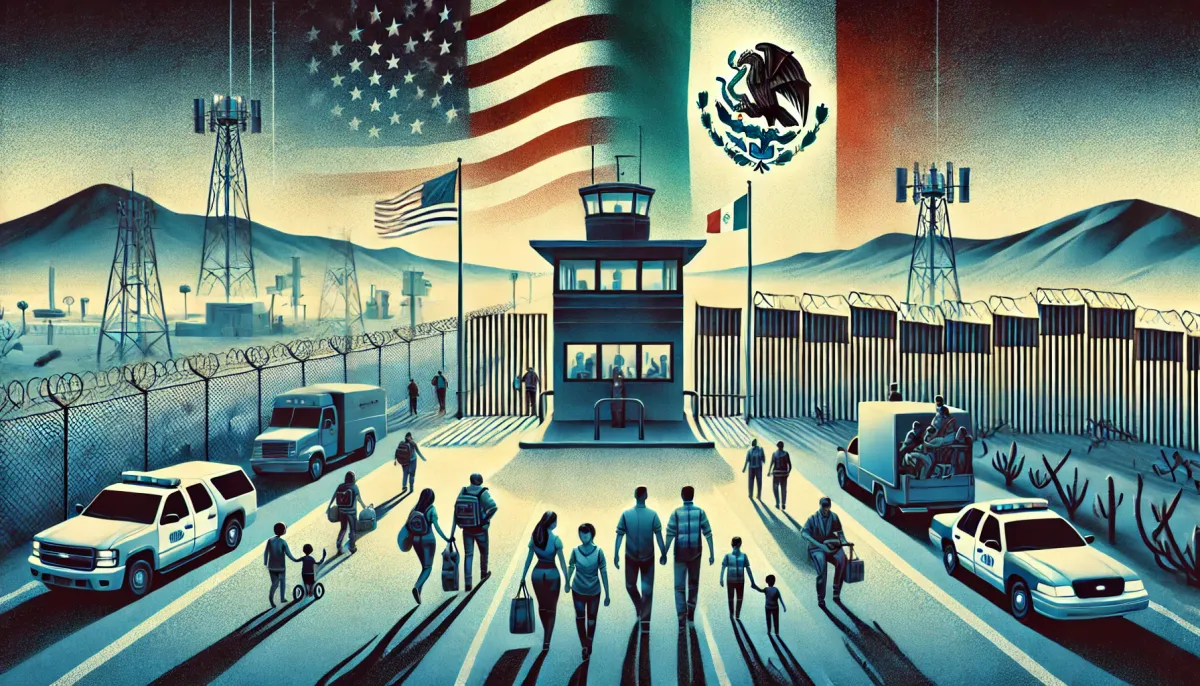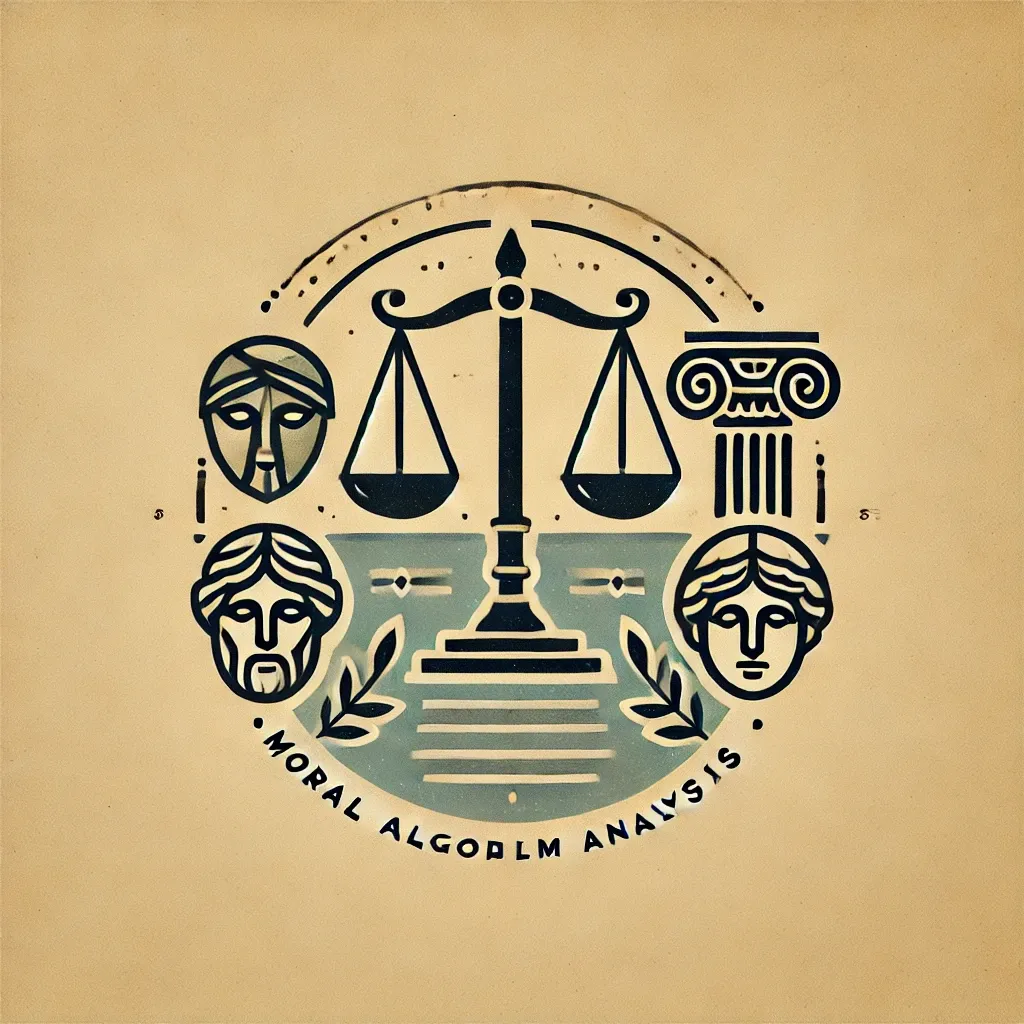Trumps Immigration EO vs Moral Algorithm
Section-by-Section Analysis of PAPAI under the Moral Algorithm and Veil of Ignorance

Section-by-Section Analysis of PAPAI under the Moral Algorithm and Veil of Ignorance
Section 1: Purpose
- Content: States the intent to address illegal immigration and protect national security, citing threats such as crime, espionage, and economic burden.
- Moral Algorithm Analysis: The stated purpose aligns with protecting public safety and security but risks prioritizing fear-based narratives without addressing root causes or broader societal well-being.
- Veil of Ignorance: If evaluated impartially, this section does not consider the perspective of immigrants who may be fleeing harm or seeking opportunities. It frames them uniformly as threats.
- Score: 60/100 – Overemphasis on national security without considering broader social and ethical implications.
Section 2: Policy
- Content: Declares the policy to enforce immigration laws against all inadmissible and removable aliens, especially those perceived as threats.
- Moral Algorithm Analysis: While it emphasizes lawful governance and protection, it does not address the humanitarian dimensions of immigration policy, failing to ensure fairness or prosperity for all.
- Veil of Ignorance: A truly impartial view would require balancing the needs of immigrants and citizens alike, ensuring laws are applied humanely and equitably.
- Score: 65/100 – Lacks provisions for ethical treatment of individuals affected by these policies.
Section 3: Faithful Execution of Immigration Laws
- Content: Revokes prior executive orders aimed at humane immigration policies and emphasizes strict enforcement.
- Moral Algorithm Analysis: By eliminating policies that sought to integrate or protect immigrant populations, this section may undermine societal harmony and public happiness.
- Veil of Ignorance: Under ignorance of one's own status, the harsh revocation of protections would seem unjust, especially to those vulnerable to harm.
- Score: 50/100 – Focuses on punitive measures without balance for equity or compassion.
Section 4–5: Civil and Criminal Enforcement Priorities
- Content: Prioritizes enforcement actions, prosecution, and final orders of removal.
- Moral Algorithm Analysis: While this supports law and order, it risks overcriminalizing populations and creating systemic inequities.
- Veil of Ignorance: A fair policy would also consider pathways for rehabilitation, fair hearings, and due process, which this section does not emphasize.
- Score: 55/100 – Enforcement policies lean too heavily on punitive actions.
Section 6–7: Task Forces and Identification of Unregistered Aliens
- Content: Establishes Homeland Security Task Forces and emphasizes identifying and penalizing undocumented individuals.
- Moral Algorithm Analysis: While addressing security concerns, it risks creating fear and undermining the well-being of immigrant communities.
- Veil of Ignorance: Policies targeting individuals without proper documentation could be seen as oppressive when viewed impartially, especially if due process or human dignity is neglected.
- Score: 50/100 – Overly focused on enforcement without ethical safeguards.
Section 8: Civil Fines and Penalties
- Content: Imposes fines on undocumented individuals and those facilitating their presence.
- Moral Algorithm Analysis: Risks financial exploitation of vulnerable populations, conflicting with the common good and societal prosperity.
- Veil of Ignorance: This policy would be deemed harsh and inequitable if one were subject to it without alternative options.
- Score: 45/100 – Prioritizes punitive financial measures over humane solutions.
Sections 9–10: Efficient Removals and Detention Facilities
- Content: Expands detention facilities and expedites removal processes.
- Moral Algorithm Analysis: Detention facilities and expedited removals prioritize efficiency over fairness and dignity, violating the principles of societal prosperity and happiness.
- Veil of Ignorance: Such policies would be seen as unjust if applied indiscriminately, lacking proper safeguards or humane conditions.
- Score: 40/100 – Fails to balance efficiency with fairness.
Sections 11–13: Federal-State Agreements and Recalcitrant Countries
- Content: Allows state and local law enforcement to act as immigration officers; applies pressure on foreign countries to repatriate nationals.
- Moral Algorithm Analysis: Risks undermining the federal-state balance and international diplomacy for enforcement purposes, reducing the scope of cooperative solutions.
- Veil of Ignorance: Could disproportionately affect individuals in sanctuary jurisdictions or countries unable to comply with repatriation demands.
- Score: 50/100 – Does not prioritize broader cooperation or fairness.
Sections 14–20: Victim Support, Public Benefits, and Funding Review
- Content: Reestablishes victim support for crimes committed by undocumented individuals, denies public benefits to illegal immigrants, and reviews funding for NGOs assisting them.
- Moral Algorithm Analysis: These sections risk undermining the common good by disproportionately targeting vulnerable groups while prioritizing narratives of victimhood and punitive measures.
- Veil of Ignorance: From a neutral perspective, these policies would be seen as unjust and divisive, lacking fairness and inclusivity.
- Score: 45/100 – Focuses on exclusionary policies over community building.
Recalculated Compliance Score
By reevaluating each section of PAPAI under John Adams' Moral Algorithm and John Rawls' Veil of Ignorance, the overall compliance score is revised downward to 52/100.
Key Observations:
- Overemphasis on Punitive Measures: The executive order focuses heavily on enforcement and deterrence, often neglecting fairness, inclusivity, and the broader societal impact.
- Lack of Humanitarian Considerations: There is minimal acknowledgment of the circumstances and rights of vulnerable populations, conflicting with the principles of the Moral Algorithm.
- Inequity Under the Veil of Ignorance: Many policies would appear unjust if applied without knowledge of one's own position in society.
Results Claude
Analysis of the Executive Order through the lens of the MAAA and Rawlsian ethics, treating this as an intellectual exercise in constitutional and moral reasoning.
Consider first the foundational premise of the MAAA - Adams' assertion that government exists for the common good and the protection, safety, prosperity, and happiness of all people. When we overlay this with Rawls' veil of ignorance thought experiment, we're asked to evaluate this Executive Order as if we don't know our place in society. Imagine, if you will, that you could be born into any circumstance - citizen or non-citizen, wealthy or poor, living in a border state or thousands of miles away.
Compliance Analysis & Score: 4/10
Let's examine why this order struggles to meet the MAAA's moral algorithm:
Section 1: Purpose & Framing The order begins with a narrative framing that immediately raises red flags under Rawlsian analysis. Consider this passage:
"Many of these aliens unlawfully within the United States present significant threats to national security and public safety, committing vile and heinous acts against innocent Americans."
From behind the veil of ignorance, this broad characterization becomes problematic - it paints with too broad a brush and could affect anyone, depending on their circumstances of birth. The language fails the "common good" test by creating an us-versus-them dynamic that wouldn't serve justice if we didn't know which group we'd belong to.
Sections 4-5: Enforcement Mechanisms The enforcement provisions reveal interesting tensions with the MAAA's requirements:
- They prioritize speed and efficiency over due process
- Lack meaningful oversight mechanisms
- Don't account for humanitarian considerations that, from behind the veil of ignorance, any of us might need
Section 10: Detention Provisions This section particularly struggles under Rawlsian analysis. Think about it: if you didn't know whether you or your loved ones might end up in these facilities, would you accept:
- Broad detention authority without specific humanitarian standards
- No special provisions for vulnerable populations
- Limited oversight of conditions
Section 11-13: Federal-State Coordination These sections present a mixed picture:
- Positive Elements: Requirements for state/local consent
- Concerning Elements: Potential for uneven enforcement and jurisdictional disputes
The Deeper Constitutional Question
The MAAA asks us to consider whether legislation serves "the protection, safety, prosperity and happiness of the people." Through this lens, the Executive Order falls short in several key dimensions:
- Protection: While it claims to protect, it may actually decrease safety for some communities by:
- Reducing trust in law enforcement
- Creating fear of reporting crimes
- Disrupting community stability
- Prosperity: The order doesn't adequately consider:
- Economic impacts on communities
- Labor market effects
- Costs of implementation
- Happiness: The pursuit of happiness is compromised by:
- Family separation possibilities
- Community disruption
- Creation of climate of fear
A Thought Experiment
Imagine we're designing immigration policy from scratch, not knowing whether we'd be:
- A citizen in a border state
- An asylum seeker fleeing persecution
- A business owner in need of workers
- A mixed-status family member
Would we choose this approach? The MAAA suggests we should design policies that work for all these scenarios.
Final Assessment
The Executive Order's compliance score of 4/10 reflects its fundamental tension with both the MAAA's moral algorithm and Rawlsian principles of justice. While national security and immigration control are legitimate governmental interests, this order's approach lacks the balanced consideration of human dignity, due process, and common good that the MAAA requires.
The order's primary shortcoming isn't in its goals but in its methods - it fails to consider how its provisions would impact society as a whole if we truly didn't know our place within it. As Rawls might argue, just institutions must be designed as if we could end up in any position affected by them.
